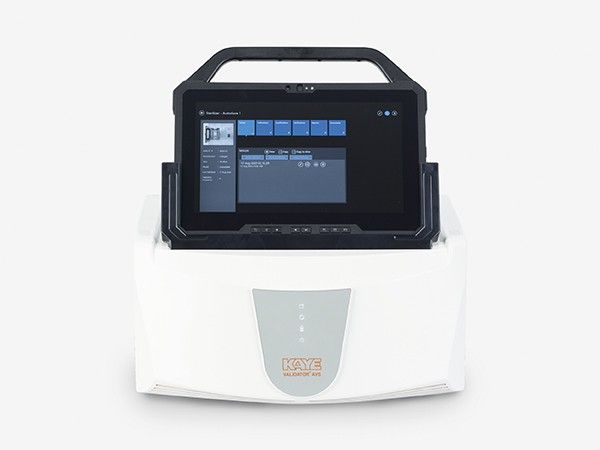In industries such as pharmaceuticals, healthcare, and food production, maintaining sterility and safety is paramount. One crucial aspect of achieving this is through the use of autoclaves. Autoclaves are devices that use steam under pressure to sterilize equipment and materials. However, to ensure they function correctly, it’s essential to perform autoclave temperature mapping and implement a robust temperature validation system. This article will delve into these concepts, explaining their importance and the steps involved in their implementation.
Understanding Autoclave Temperature Mapping
Autoclave temperature mapping is the process of recording and analyzing temperature distributions within an autoclave chamber. This procedure ensures that the entire chamber reaches and maintains the necessary temperatures for effective sterilization. It involves placing multiple temperature sensors at various locations within the chamber to monitor and record temperature variations.
Why is Temperature Mapping Important?
Temperature mapping is crucial for several reasons:
- Uniform Sterilization: Ensuring that all parts of the autoclave chamber reach the required sterilization temperature is vital. Any cold spots can result in incomplete sterilization, leading to potential contamination.
- Compliance with Regulations: Regulatory bodies such as the FDA and EMA require documented evidence of temperature distribution within autoclaves to ensure compliance with safety standards.
- Equipment Validation: Regular temperature mapping helps in the validation of autoclaves, ensuring they operate correctly over time. This validation is necessary to maintain the integrity of sterilization processes.
Steps in Temperature Mapping
- Preparation: Before starting the mapping process, prepare the autoclave by cleaning it and ensuring it’s in good working condition. Also, prepare the temperature sensors and data loggers.
- Sensor Placement: Place temperature sensors at strategic locations within the autoclave chamber. These locations should include the center, corners, and areas where items are typically placed for sterilization.
- Running the Autoclave: Run the autoclave through a typical sterilization cycle with the sensors in place. This cycle should mimic normal operating conditions as closely as possible.
- Data Collection: Collect data from the temperature sensors throughout the sterilization cycle. This data will provide a detailed map of temperature distribution within the chamber.
- Analysis: Analyze the collected data to identify any temperature variations. Look for cold spots or areas where the temperature did not reach the required level.
- Documentation and Reporting: Document the findings and create a report. This report should include the temperature distribution map, analysis, and any corrective actions taken if discrepancies were found.
Implementing a Temperature Validation System
A temperature validation system is a comprehensive approach to ensuring that the temperature conditions within an autoclave are consistently within the required range. This system involves regular monitoring, maintenance, and calibration of temperature sensors and the autoclave itself.
Components of a Temperature Validation System
- Temperature Sensors: High-quality temperature sensors are the backbone of a temperature validation system. These sensors must be accurate, reliable, and regularly calibrated.
- Data Loggers: Data loggers are used to record temperature readings from the sensors. These devices should have sufficient memory and battery life to record data over extended periods.
- Validation Protocols: Detailed protocols for temperature validation should be in place. These protocols should outline the steps for temperature mapping, sensor calibration, and data analysis.
- Maintenance Schedule: Regular maintenance of the autoclave and temperature validation system is essential. This includes cleaning, inspection, and calibration of equipment.
- Training: Personnel involved in temperature validation should be adequately trained. This training should cover the operation of the autoclave, use of temperature sensors and data loggers, and analysis of temperature data.
Benefits of a Temperature Validation System
- Ensures Consistent Sterilization: By regularly validating the temperature conditions within the autoclave, you can ensure consistent and effective sterilization, reducing the risk of contamination.
- Regulatory Compliance: A robust temperature validation system helps in meeting regulatory requirements, avoiding potential fines and sanctions.
- Improves Process Efficiency: Regular validation and maintenance can help in identifying and addressing issues before they become major problems, improving overall process efficiency.
- Enhances Safety: Ensuring that the autoclave operates correctly and consistently at the required temperatures enhances the safety of sterilized products, protecting both users and consumers.
Challenges and Solutions in Temperature Mapping and Validation
While autoclave temperature mapping and validation are critical, they come with their own set of challenges. Here are some common challenges and potential solutions:
- Sensor Placement: Determining the optimal placement of temperature sensors can be challenging. It’s important to conduct a thorough analysis of the autoclave chamber and consult guidelines to identify critical points for sensor placement.
- Data Accuracy: Ensuring the accuracy of temperature data is crucial. Regular calibration of sensors and data loggers can help maintain accuracy. Additionally, using high-quality equipment reduces the likelihood of errors.
- Data Analysis: Analyzing temperature data can be complex, especially if there are significant variations. Using specialized software can aid in data analysis, making it easier to identify patterns and discrepancies.
- Compliance: Keeping up with regulatory requirements can be demanding. Staying informed about the latest regulations and guidelines is essential. Engaging with industry experts and consultants can provide valuable insights and assistance in maintaining compliance.
- Cost: Implementing and maintaining a temperature validation system can be costly. However, the investment is justified by the benefits of consistent sterilization, regulatory compliance, and improved process efficiency.
Conclusion
Autoclave temperature mapping and the implementation of a robust temperature validation system are essential for ensuring the effectiveness of sterilization processes in various industries. By meticulously mapping temperature distributions and regularly validating temperature conditions, you can achieve consistent sterilization, comply with regulatory standards, and enhance overall process efficiency. While there are challenges associated with these practices, the benefits far outweigh the costs, making them a critical component of any sterilization process.
In conclusion, the key to effective sterilization lies in understanding and controlling the temperature conditions within your autoclave. Through diligent temperature mapping and the implementation of a comprehensive temperature validation system, you can ensure the safety and sterility of your products, protecting both your business and your customers.

